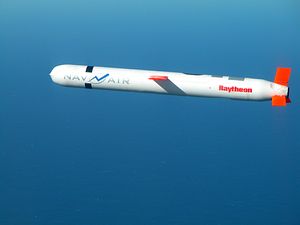According to a new report from Defense News, the United States is moving forward on development of a dangerous new nuclear capability. Aaron Mehta of Defense News reported on February 21 that the Department of Defense intends to create a program of record for a submarine launched cruise missile (SLCM) equipped with a nuclear warhead. The request comes in response to Trump administration preferences set forth in the 2018 Nuclear Posture Review, which also called for the deployment of low-yield nuclear warheads on submarine launched ballistic missiles.
The United States has not deployed a nuclear armed SLCM since the retirement of the TLAM-N in 2013. The missile was retired because of concerns about survivability in contested airspace and concerns over how its terrain-matching guidance system would bring it over the territory of friendly nations. While a new missile would presumably reduce concerns about survivability (by increasing the speed of the missile, its stealthiness, or both), issues with guidance would undoubtedly remain. The United States military has generally resisted putting nuclear weapons on platforms dependent upon satellite guidance because of concerns over jamming and hacking.
The deployment of a newer, more survivable SLCM would not exactly create a new problem so much as reintroduce an old one. Nuclear cruise missiles take up space on a ship and require different kinds of crew expertise. Their storage alongside conventional missiles creates an obvious potential for accidents. Discrimination would also become a problem. The United States has launched a great many cruise missiles from submarines as part of the War on Terror and associated conflicts. China, Russia, and other nuclear powers can credibly recognize such launches as carrying conventional munitions. If attack submarines reacquire the capability to launch nuclear weapons, then Beijing and Moscow need to worry about every missile launch within range of their territory. This would become more, not less, problematic in context of a direct conflict between the United States and China. The U.S. has promised to hold targets within China at risk during a general conflict, presumably with cruise missiles. Heretofore China has not needed to account for the possibility that these missiles might carry nuclear warheads, but if the U.S. deployed nuclear SLCMs then any strike might be interpreted as a nuclear attack.
To be sure, the deployment of nuclear SLCMs would cause all kinds of operational and tactical problems for Russia and China. But the deterrent capabilities of the United States are not in serious doubt, and building additional platforms such as this missile would likely prove more destabilizing than helpful.
































